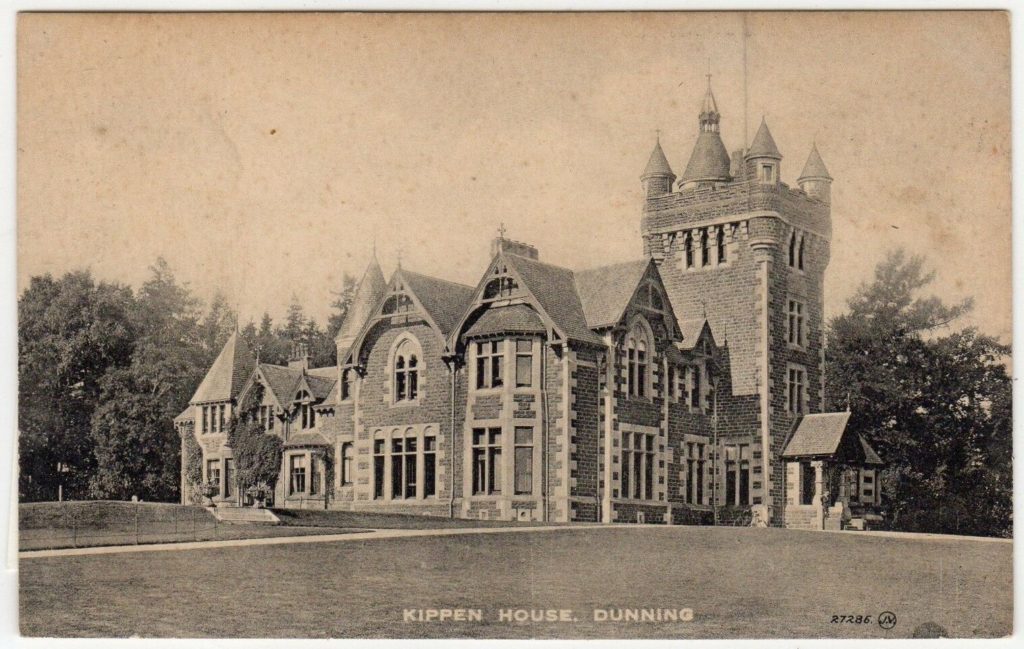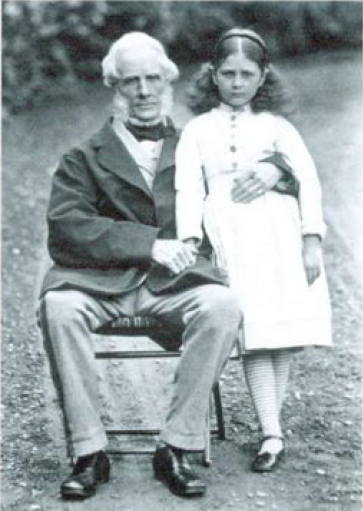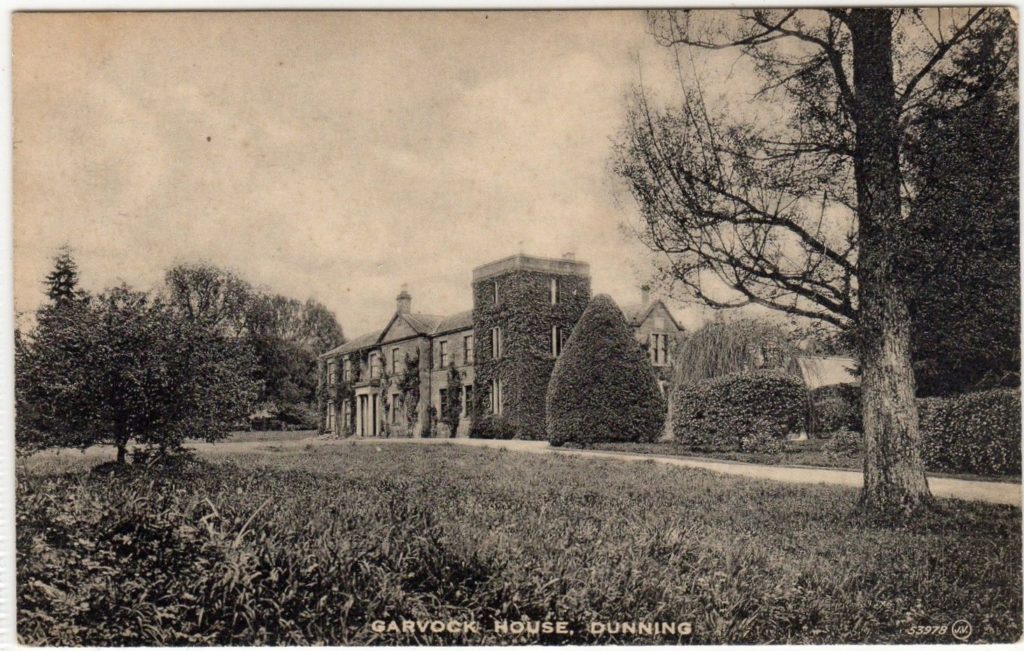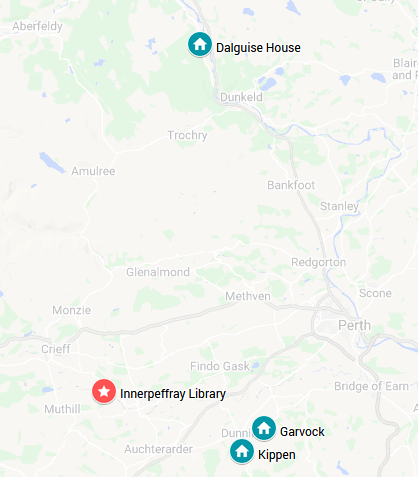As it is the 155th anniversary of Beatrix Potter’s birth on the 28th July 2021, we are celebrating by exploring some of the links between Beatrix Potter and the Library of Innerpeffray.
Helen Beatrix Potter Heelis (1866-1943) is remembered today as a respected mycology expert, one of the most popular children’s authors of the Victorian period, and the creator of unforgettable fictional characters including Jemima Puddle-Duck, Mrs. Tiggy-Winkle, Squirrel Nutkin, and many more. Perhaps her most well-known book, The Tale of Peter Rabbit, was first conceived of while Beatrix was staying near Dunkeld in 1893. Writing a letter to the son of one of her former governesses, she came up with a story about “four little rabbits whose names were Flopsy, Mopsy, Cottontail and Peter.” Little did she know then that Peter Rabbit would one day become a household name!

It is a well-known fact that Beatrix Potter and her family spent many summer holidays in Perthshire, with her father, Rupert Potter, renting Dalguise House near Dunkeld every summer between 1871 and 1881.[1] Interested in the sport and freedom of Scotland, with its plentiful shooting, fishing and beautiful opportunities for walking and photography, the extended Potter family often travelled away from London between May and October.[2] Before becoming regular guests at Dalguise, we know that the Potters stayed with Edmund Potter near Alness in Easter Ross, and in Tulliemet House in 1870.[3] Excitingly, we now have evidence from the Innerpeffray Library visitors’ books that the Potters also stayed in Scotland in 1868 and 1869.
On the 26th August 1868, a month after Beatrix’s second birthday, the following signatures were entered into the visitors’ book:

Rupert Potter and Mrs. R Potter, Kippen, and Mrs. Leech and daughter, London.
Rupert Potter (1832-1914), Beatrix’s father, was a barrister and successful amateur photographer who married Beatrix’s mother, Helen Leech (1839-1932) on the 8th August 1863. The Potters were visiting with Helen’s mother, Beatrix’s maternal grandmother, Jane Ashton (1806-1884) and one of her daughters, Beatrix’s aunt – most likely the eldest daughter of Mrs Leech, Jane (1833-1876), who never married and remained close to home. Although Mrs Leech and her daughter write their location as London, Rupert and Helen write that they were staying at Kippen Estate while visiting Scotland, rather than their usual London address. Although there is a village called Kippen in Stirlingshire, as below where the Potters wrote ‘Garvock’ to refer to Garvock House in Dunning, it seems more likely that they were referring to Kippen House, also in Dunning, which was built in the 1840s.

The following year, on the 13th August 1869, we find the Potters returning to Innerpeffray for a second time, this time accompanied by Reverend William Gaskell as well as Mrs and Miss Leech:

Mrs and Miss Leech, London; Revd. W. Gaskell, Manchester; and Mr and Mrs Rupert Potter, Garvock and London.
In the summer of 1869, the Potter family was again holidaying with Beatrix’s maternal grandmother and aunt, as well as Unitarian minister and close friend of the family William Gaskell (1805-1884). It was common for the Victorian middle classes to “invite friends to join them on holiday,” and the Potters frequently invited friends and family to join them in Scotland – “especially those who liked to fish and who would endure Rupert’s endless photography sessions.”[4] Gaskell was a close friend and teacher of Rupert Potter’s, having known Rupert’s father Edmund since his university days. Indeed, Jenny Uglow, biographer of William’s wife Elizabeth, states that William often joined the Potters on their annual summer holidays but never invited his wife to accompany him – she emphasizes that he “needed escape, less, one sometimes feels, from the city than from his growing family.”[5] It appears that he preferred spending his leisure time with the Potters rather than his own family.

On this visit to Innerpeffray, the Potters recorded their location as both Garvock and London, indicating that their long-term residence was in London but at the present time they were staying in Garvock House while in Scotland.

The following month, the Potters visit Innerpeffray Library for the third time on the 6th September 1869. Their entries in the visitors’ book reveal that although the Leeches were not present, the Potters were joined by Beatrix’s paternal grandfather, Edmund Potter (1802-1883), who writes his place of residence as his Hertfordshire home, Camfield Place:

Mr Edmund Potter M.P., Camfield, Hatfield, Herts; Mr. and Miss Potter, also from Camfield; and Mr and Mrs R Potter, Garvock.
It is clear from their three separate visits that Rupert and Helen Potter enjoyed their trips to Innerpeffray – dedicating time from two summer holidays to visit and on each occasion bringing a different visitor to see the library. Innerpeffray was an accessible tourist destination from both Garvock and Kippen by carriage, train or even bicycle – it would take around three hours to walk or one hour to cycle to the library from either location on modern roads. Although Innerpeffray was still easily accessible by train from Dalguise House, they must have considered it too long a journey, as the Potters do not appear again in the visitors’ books.

Noticeably absent from all of these visitors’ book entries is Beatrix Potter herself! Aged two and three years old at the time of the respective visits, Beatrix may have been left at home with her nurse rather than joining her parents and grandparents at Innerpeffray Library. It is true that Beatrix often spoke of her lonely childhood, where she spent little time with her parents while in London, cared for instead by her nurses and governesses. However, Beatrix also wrote that her “happiest moments” were those spent in Scotland, where “she got extra attention from her father.”[6] Perhaps, away from the stricter rules of London society, “where every activity was carefully regimented and supervised,” the Potters brought their daughter with them while touring Scotland.[7]

From an early age, Beatrix was an intelligent young girl who was encouraged by friends and family to love stories and books. Reverend William Gaskell, who was a regular holiday companion and visited Innerpeffray with the Potters in August 1869, was chairman of the Portico Library in Manchester from 1849 to 1884 and was recorded as having borrowed more than 700 books between 1850 and 1859.[8] Her grandfather Edmund Potter, who accompanied the Potters to Innerpeffray in September of that same year, had “built a reading room and library which was kept well stocked with books and newspapers.”[9] Although her paternal grandmother, Jessy Crompton Potter, did not accompany her husband Edmund on his trip to Innerpeffray, Beatrix often wrote that she remembered “the stories told by her adoring grandmother” in the library of Camfield Place.[10] With these bibliophile friends and relatives knowing the importance of books on young, impressionable minds, perhaps Beatrix was indeed brought to see the Library of Innerpeffray. Without her name written in the visitors’ books, we can only guess – but I for one would like to think so.
Isla Macfarlane, PhD Student
[1] Lynne McGeachie, Beatrix Potter’s Scotland: Her Perthshire Inspiration (Edinburgh: Luath Press, 2010), p. 29.
[2] ‘Beatrix Potter Exhibition Garden’, Birnam Arts Visitor Attractions <https://www.birnamarts.com/visitor-tourist-attractions/beatrix-potter-exhibition-garden/>.
[3] Linda Lear, Beatrix Potter: A Life in Nature (New York: St Martin’s Press, 2007), p. 27.
[4] Lear, pp. 22; 28.
[5] Jenny Uglow, Elizabeth Gaskell: A Habit of Stories, (London: Faber and Faber, 2010), p. 103.
[6] Lear, p. 28.
[7] Lear, p. 29.
[8] Barbara Brill and Alan Shelston, ‘Manchester: “A Behindhand Place for Books”: The Gaskells and the Portico Library’, The Gaskell Society Journal, 5 (1991), 27–36 (pp. 27–28) <https://www.jstor.org/stable/45185290>.
[9] Lear, p. 12.
[10] Lear, p. 10.
